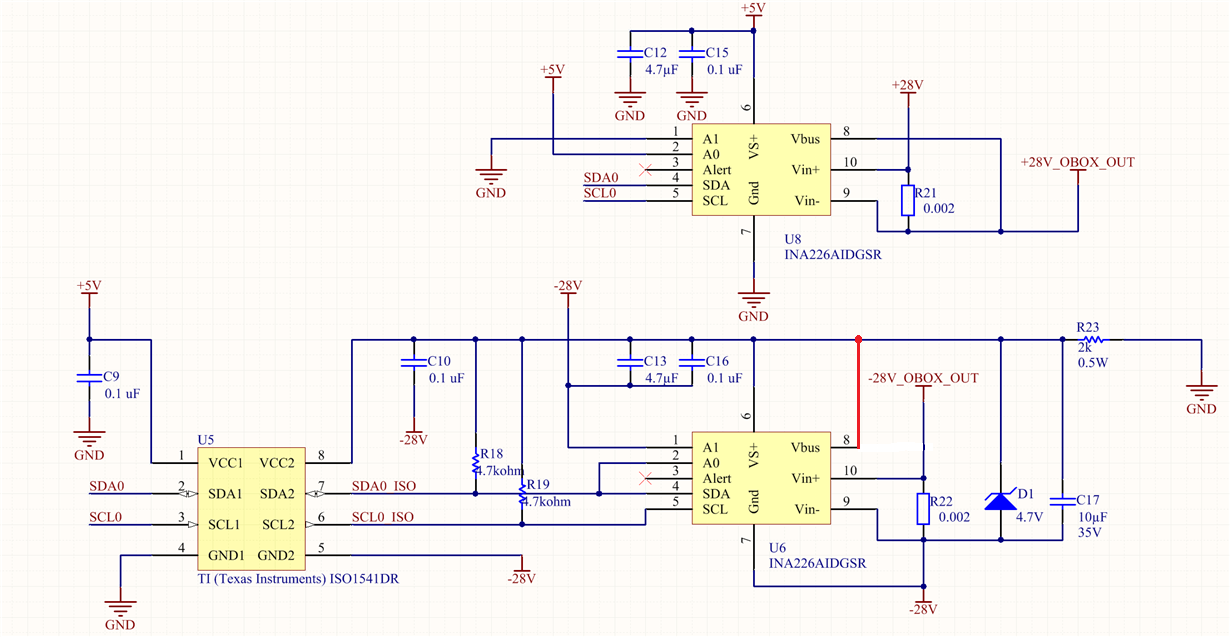Other Parts Discussed in Thread: TIDA-00313
Relating to the thread https://e2e.ti.com/support/amplifiers/current-shunt-monitors/f/931/t/426430 I have a question to the circuit below:
Should not input Vbus of Chip INA226/U6 be connected to circuit-GND to measure the negative voltage? According the INA226 datasheet Vbus is referenced to GND-pin of INA226 (in this case -28V). I think in this circuit Vbus sees only the Shunt-voltage (R22).




